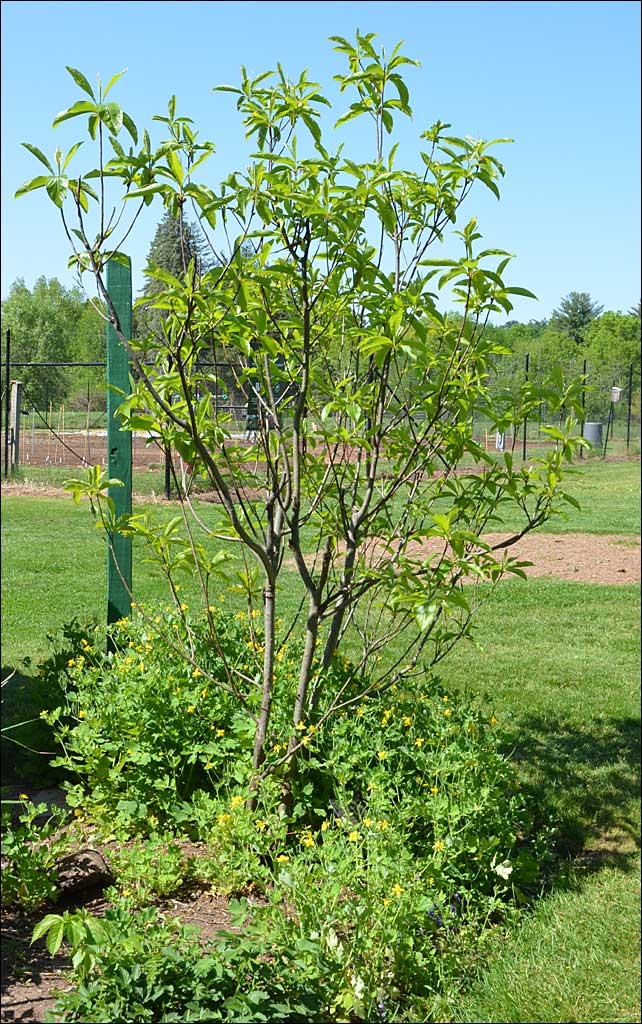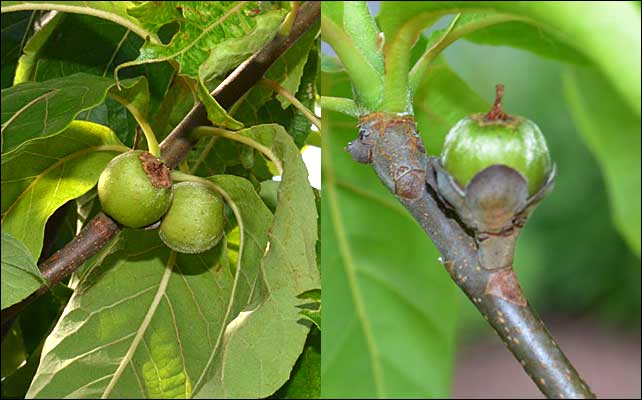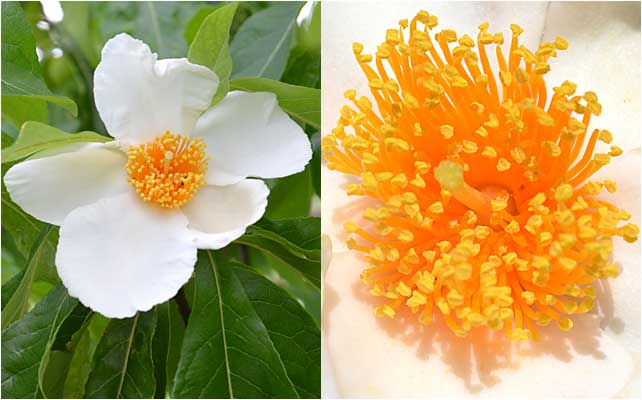16. FRANKLIN TREE
Franklinia alatamaha

The Franklin Tree occupies a small corner of the Arboretum, and a large part of U.S. botanical history. A father son/team discovered and studied it in the mid 1700s. William Bartram found the tree growing along the Altamaha river, Georgia, in 1765. His son John dedicated it to his late father's friend, Ben Franklin. His son continued his work, but ultimately the tree could no longer be found in the wild. The last sighting of a meager 6-8 trees was in 1803, and subsequent trips turned up no specimens. It is commonly reported as extinct in the wild since 1803.
FRUIT IN SPRING?

All specimens of Franklinia alatamaha that exist today are descended from the seeds and cuttings procured by William and John Bartram. This small, unique tree is also unusual in that it does not flower until late summer (and continues to the first hard frost). The fruit over-winters in a hard, woody shell. The fruit breaks out of the shell (right) in the following Spring.
SUMMER

The Franklin Tree fills out and grows each summer, but will rarely exceed 20 - 25 ft. in height. Westmoor naturalist Douglas Jackson planted this Franklinia at the Arboretum in 2010, and after a few struggling years, it has flourished. They are difficult to grow. The fruit is usually found in the interior portions of the tree, and keen eyes will see the beginnings of the flower buds - another distinctive part of this tree.
LATE SUMMER BUDS

These unique flower buds grow throughout the summer, and are easy to see by mid-August. Mid to late August is when the flower bloom begins.
LATE SUMMER FLOWER

Mid to late August is the time you expect to see the impressive, showy white/orange flowers of the Franklin Tree. The flowering strategy is to produce a fair amount of blooms from late summer to the first hard frost - probably an effort to lengthen the time pollinators have to fertilize the tree. The trees are polygamo-monecious, meaning there are both male and perfect flowers (male and female parts on the same flower) on a tree. The tree is not a prolific fruit producer - perhaps a part of its demise.
FLOWER

The Franklin Tree is a member of the Tea family of trees, and its camellia-like flower is very similar to the flowers of another tree in the Arboretum, Japanese Stewartia. The fruit is similar, but their cycles are completely different. The Franklin Tree was also called the "Lost Camellia" when first discovered, but it is one of botany's mysteries why this tree flourished for a time on several acres in Georgia, and then disappeared. It has never been found growing wild anywhere else in the world.